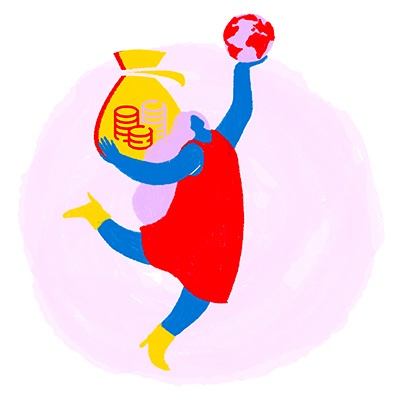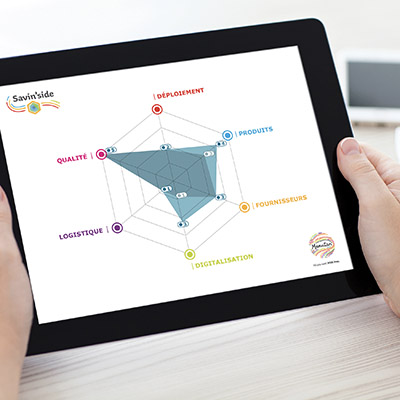The United Nations Standard Products and Services Code (UNSPSC) is an open, multisectoral, and global classification system for all goods and services. Discover its definition, how it works, and its benefits for the procurement function.
The definition of UNSPSC
The United Nations Standard Products and Services Code (UNSPSC) was initially created by the United Nations Development Programme (UNDP) and the Dun & Bradstreet Corporation (D&B) in 1998. Since 2003, this classification standard has been managed by GS1 US®, a non-profit organisation for information standardisation.
The UNSPSC is an international standard that accurately and efficiently classifies products and services that are bought and/or sold. This segmentation follows a logical order to reflect how the products move through the supply or value chain.
In total, it includes 57 segments that cover:
- Raw materials;
- Industrial equipment;
- Equipment components and supplies;
- Manufactured products;
- Services.
How the UNSPSC works
The UNSPSC uses an 8-digit structured numeric coding system. This code includes a four-level hierarchical structure: segment, family, class, and commodity. An optional fifth level (consisting of two additional digits) indicates the business function: Rental or lease, maintenance or repair, manufacturer, wholesale, and retail. Each product appears only in one category and is accompanied by a title and a description.
> Segment 44: Office supplies, equipment and accessories;
> Family 10: Office machines and their supplies and accessories;
> Class 31: Supplies for printers, fax machines and photocopiers;
> Commodity 03: Toner.
This coding system, which is continuously updated, is now available in about fifteen languages: German, Arabic, English, Chinese, Korean, Danish, Spanish, Finnish, French, Hungarian, Italian, Japanese, Dutch, Norwegian, Portuguese and Swedish.
Everyone can have access to this coding system, in a defined framework. There are no royalty or licence fees for basic use. There are no restrictions either on sharing the codes with trading partners. However, paid subscriptions are available for organisations that want to make more extensive use of it (modification requests, multiple users, advanced searches…).
The advantages of such standardised classification
The UNSPSC aims to assist organisations across the world to increase their productivity, reduce their costs and enhance their efficiency.
By implementing this standardised classification within their systems, businesses can automate the processing and data collection related to spending, starting from purchase orders, supplier accounts, etc.
This way, they will have a complete overview of their spending, across various departments, divisions and subsidiaries. From this data, they can improve their procurement management and activate the necessary optimisation levers: Rationalise their supplier portfolio, standardise their procurement, use significant order volumes to negotiate better rates, etc.
In one of its studies, consultancy firm Ernst & Young concurs: "We estimate organizations can achieve cost savings of at least 10% – 15% from their current spend baseline by addressing tactical opportunities while building toward an integrated spend management approach.”[1]
Furthermore, the use of this common classification system also contributes to making cooperation with business partners smoother. If everyone uses the same language, it eliminates all ambiguity.
Increased efficiency in the case of long tail spend
According to Pareto’s Law, also known as the 80-20 rule, long tail spend accounts for 5% of spending and around 50% of the procurement subcategories. The use of such a classification system is therefore perfectly suited to this type of procurement. Long tail spend is often incorrectly seen as non-strategic and suffers from a less structured management and lesser control on suppliers and products that are bought.
To deal with long tail spend, the implementation of a digital solution such as Punch Out seems essential. Combined with the UNSPSC classification, it enables companies to gain all the visibility needed to optimise managing this type of procurement category.
Depending on the amount and importance of the category, buyers may decide to rationalise their supplier portfolio by limiting certain categories to specific suppliers, for instance. They may also choose a general supplier to cover several categories, thus reducing supplier database management costs and simultaneously enhancing user experience.
Framework agreements can then be set up with these suppliers. Buyers can rely on them to encourage internal clients to adhere to procurement policies, thus contributing to reducing maverick spend. By ordering as much as possible from these registered suppliers, buyers gain even more visibility on the amount spent on these procurement commodities, thus nourishing this virtuous circle.
Classifying products and services through a common coding system facilitates the trade between buyers and suppliers worldwide. It’s also important to remember that there’s a whole range of classifications: Beyond the UNSPSC, there are also ecl@ss or ETIM for technical products. Regardless of the chosen option, the process and the benefits remain the same.
[1] Ernst & Young, A vision for total spend management: creating value through intelligent integration, 2020









